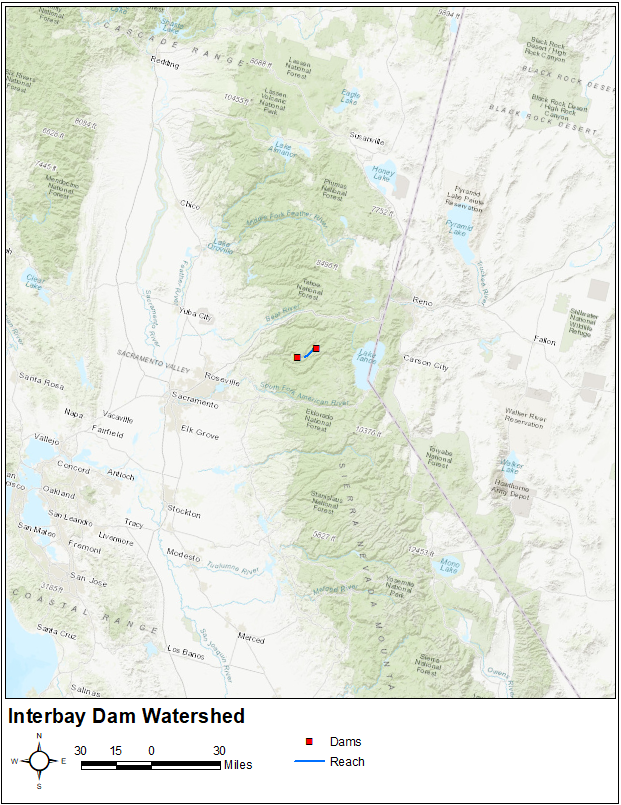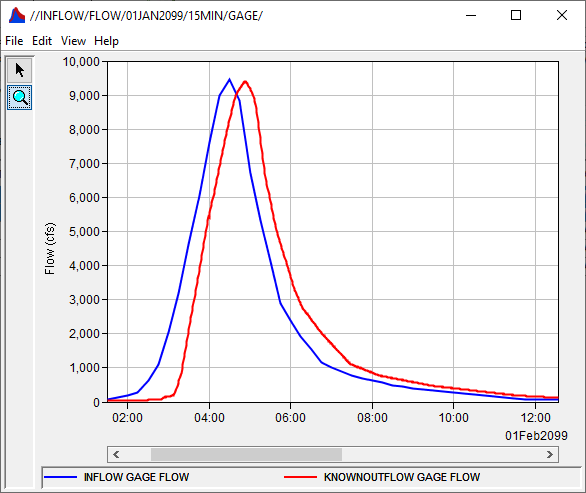Download PDF
Download page W4 - Introduction to the Muskingum-Cunge Routing Workshop.
W4 - Introduction to the Muskingum-Cunge Routing Workshop
Open Channel Flow
As total runoff from subbasins reach defined channels, depths increase and the predominant flow regime begins to transition to open channel flow. At this point, open channel flow approximations are used to represent translation and attenuation effects as flood waves move downgradient. Each of the channel routing methods within HEC-HMS implements a hydrologic routing methodology as compared to a hydraulic approach that implements the unsteady flow equations. Each method included in the program provides a different level of detail and not all methods are equally adept at representing a particular stream.
At the heart of each routing method included in the program are the momentum and continuity equations, which are foundational within open channel flow. The momentum and continuity equations are derived from basic principles including:
- Velocity is constant, and the water surface is horizontal across any channel section.
- All flow is gradually varied, with hydrostatic pressure prevailing at all points in the channel. Thus, vertical accelerations can be neglected.
- No lateral or secondary circulation occurs.
- Channel boundaries are fixed. Erosion and/or deposition do not alter the shape of a channel cross-section.
- Water is of uniform density, and resistance to flow can be described by empirical formulas, such as Manning's and Chezy's equation (U.S. Army Corps of Engineers, 1994).
The momentum equation accounts for forces that act on a body of water in an open channel. In simple terms, it equates the sum of gravitational forces, pressure forces, and friction forces to the product of fluid mass and acceleration. The continuity equation accounts for the volume of water in a reach of an open channel, including the volume flowing into the reach, the volume flowing out of the reach, and the volume stored in the reach. When combined, these two equations are known as the St. Venant or Dynamic Wave equations.
Although the solution of the full equations is appropriate for all (and required for many) one-dimensional channel flow problems, approximations are adequate for most hydrologic simulations. Specifically, simplifications of the momentum equation are often made that only include relevant and significant terms.
Overview
In this workshop, you will become familiar with several channel routing methods that are available within HEC-HMS. Specifically, you will:
- Estimate initial parameter values using GIS information.
- Enter the initial parameter values within a basin model and compute the simulation.
- Calibrate the initial parameter values to achieve a better fit to provided data.
Questions will be provided throughout the workshop.
Background
In this workshop, the study area is designated as a portion of the Middle Fork American River between Interbay Dam and French Meadows Reservoir, as shown in the following figure.

Elevations along the reach of interest range from approximately 3350 ft to 5100 ft as referenced to the North American Vertical Datum of 1988 (NAVD88), as shown in the following figure.

Data
A 24-hour time period will be simulated within this workshop.
Precipitation
No precipitation will be simulated within this workshop.
Streamflow
A "known" hydrograph will be used as an upstream boundary condition to the reach in question. This "known" hydrograph was also routed using unsteady HEC-RAS computations to develop an outflow hydrograph. This HEC-RAS outflow hydrograph will be used as an "observed" hydrograph with which all subsequent results will be compared. These two hydrographs are shown and detailed within the following figure.

Model Configuration
An HEC-HMS project named "Muskingum_Cunge_Workshop" has already been created for you. This HEC-HMS project contains a basin model named "Trapezoidal", a meteorologic model named "noRain", and a control specification named "hypothetical". As shown within the following figure, there is a single source element named "Inflow" that is connected to a routing reach element named "MF_American_Rv_R20" that is connected to a junction element named "Outflow". These elements were originally delineated using terrain data downloaded from the USGS National Map Viewer.

The "Inflow" source element was set to use the previously-described upstream boundary condition (i.e. "known" inflow hydrograph). The previously-mentioned HEC-RAS outflow hydrograph (i.e. "observed") was linked to both the MF_American_Rv_R20 routing reach and Outflow junction elements as observed data.